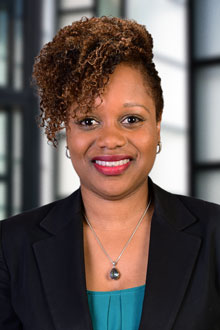New York Office Secures Three Significant Summary Judgment Victories on “Serious Injury” Threshold Grounds - Discectomy, Arthroscopic Knee Surgery, and Alleged Fractures Do Not Defeat Threshold Motions

New York, N.Y. (July 13, 2021) - Lewis Brisbois' New York office has been gaining significant traction in getting transportation cases dismissed on the basis that the plaintiff did not sustain a “serious injury” within the meaning of New York Insurance Law section 5102(d).
This alert outlines three recent cases won by Lewis Brisbois attorneys on these grounds:
A. February 2021 – Nassau County Supreme Court – Right Knee Surgery
New York Partner Sheryl S. Fyffe and Associate Kristen Carroll got the plaintiff’s complaint dismissed in Nassau County Supreme Court on liability and "serious injury" grounds in a suit to recover damages for personal injuries allegedly sustained as a result of falling on a bus. The plaintiff claimed a right knee meniscal tear requiring surgery, internal derangement of the right ankle and foot, and exacerbation of internal derangement of her lumbar spine in relation to the accident.
The court found that the defendants established their prima facie burden of entitlement to judgment as a matter of law. The defendants submitted the expert report of an orthopedist, who found normal ranges of motion in the plaintiff’s right knee. The expert also noted that the plaintiff had a history of lumbar disc degeneration, with prior examination demonstrating diminished reflex and sensory changes that predated the accident. Moreover, the defendants also submitted an expert radiology report, which provided an analysis of the plaintiff’s films using axial, coronal, and sagittal imaging techniques. The report provided the specific chronic and degenerative conditions displayed on the plaintiff’s films, with the expert concluding that the conditions were not causally related to the plaintiff’s accident.
In opposition, the plaintiff’s assertion in the medical evidence that she merely relayed that her prior injuries were resolved was insufficient to rebut the defendants’ prima facie case. The plaintiff had submitted two doctor’s reports, which noted decreased range of motion in her knee and stated that her injuries were significant and permanent in nature. However, the court reasoned that the plaintiff failed to provide any competent evidence to support her claim that her prior injuries were resolved, as the doctors merely commented that according to the plaintiff, her prior injuries and complaints of pain to her right knee were dormant and the prior injuries to her back were essentially resolved.
B. May 2021 – Nassau County Supreme Court – Lumbar Discectomy
New York Partner Sheryl S. Fyffe and Associate Kristen Carroll moved for summary judgment in Nassau County Supreme Court on both liability and threshold grounds in a case where the plaintiff claimed various injuries to her lumbar and cervical spine, and significantly, claimed a lumbar percutaneous discectomy also in relation to the accident.
The defendants won dismissal of the plaintiff-passenger’s case on liability grounds, but the court specifically noted in its decision that if the defendants had brought the motion solely on the serious injury issue, the outcome would have been the same. The court stated that the defendants established their entitlement to summary judgment as a matter of law, based upon the affirmed reports of the doctors who performed the independent medical examinations. In opposition, the plaintiff had offered no admissible evidence and failed to adequately address a gap in treatment as well as the defendants’ arguments that the plaintiff’s injuries were degenerative in nature.
C. June 2021 – New York County Supreme Court – Fractured Hip & Hip Replacement
New York Partner Bianca N. Nicoletti and Associate Kristen Carroll recently won motion for summary judgment and secured the dismissal of the plaintiff's complaint in New York County Supreme Court. In this matter, the plaintiff was a passenger on a bus who claimed that he sustained a fractured hip and lumbar injuries when a handicapped accessible seat slid back and hit his knees, which he alleged resulted in him needing hip revision/replacement surgery.
The court held that the defendants established their entitlement to summary judgment by demonstrating the lack of a causal connection between the alleged injuries to the plaintiff’s hip and the subject accident through the submission of the expert’s independent medical examination (IME) report.
In addition to the expert’s own examination and review of the plaintiff’s films, the expert tactically used the plaintiff’s own medical records to support our argument that the hip surgery was not causally related. With regard to the claimed fracture to the plaintiff's left hip, the defendants’ expert noted that the plaintiff’s medical records showed that a CT scan of his left hip performed ten days after the accident revealed no fractures. Regarding the plaintiff’s claim of damage to his previous left hip replacement, which allegedly required a revision due to the accident, the expert noted that no such damage was reported in the imaging reports or office notes of the plaintiff’s treating orthopedist.
In addition, the court noted several grounds on which the plaintiff failed to raise a triable issue of fact in opposition to the defendants’ motion. Crucially, the court noted that plaintiff’s doctor’s report, based on an examination conducted four years after the accident, was conclusory and speculative. This finding is significant, as plaintiffs often submit medical reports that are obtained after defendants file a motion for summary judgment in an attempt to rebut the motion, rather than presenting a summary of verified, continued treatment since the accident.
Moreover, the court stated that the plaintiff’s report in opposition was also deficient in that it failed to address the defendants’ expert’s findings as to a lack of a left hip fracture, and failed to refute the defendants’ evidence demonstrating the plaintiff’s degenerative and pre-existing conditions. The court also found that the plaintiff did not offer any explanation for a two-year gap in treatment and failed to offer proof of contemporaneous treatment.
Conclusion
Overall, the key is to establish that the alleged injuries are not causally related. Even alleged fractures and post-accident surgeries do not necessarily defeat a threshold motion. Careful retention and working with the right experts is one of the keys to getting a threshold motion granted. The filing of a threshold motion also sometimes leads to a very favorable settlement. The other key is to focus on the fact that surgery is not listed within the below statutory definition nor does it, in and of itself, require a court to find that a plaintiff has sustained a "serious injury."
A serious injury is defined under New York Insurance Law section 5102(d) as (1) death; (2) dismemberment; (3) significant disfigurement; (4) a fracture; (5) loss of a fetus; (6) permanent loss of the use of a body organ, member, function or system; (7) permanent consequential limitation of the use of a body organ or member; (8) significant limitation of the use of a body function or system; or (9) a medically determined injury or impairment of a non-permanent nature which prevents the injured party from performing substantially all of the material acts that constitute such person’s usual and customary daily activities for not less than ninety (90) days during the one hundred and eighty days (180) immediately following the occurrence of the injury or impairment.
For more information on any of the strategies utilized or cases mentioned above, please contact the attorneys involved directly. Visit our Transportation, General Liability & National Trial Practice pages to learn more about our nationwide capabilities in these areas.
Authors:
Sheryl S. Fyffe, Partner
Kristen Carroll, Associate
Bianca N. Nicoletti, Partner
Editor:
Gregory S. Katz, Managing Partner - New York, NY


